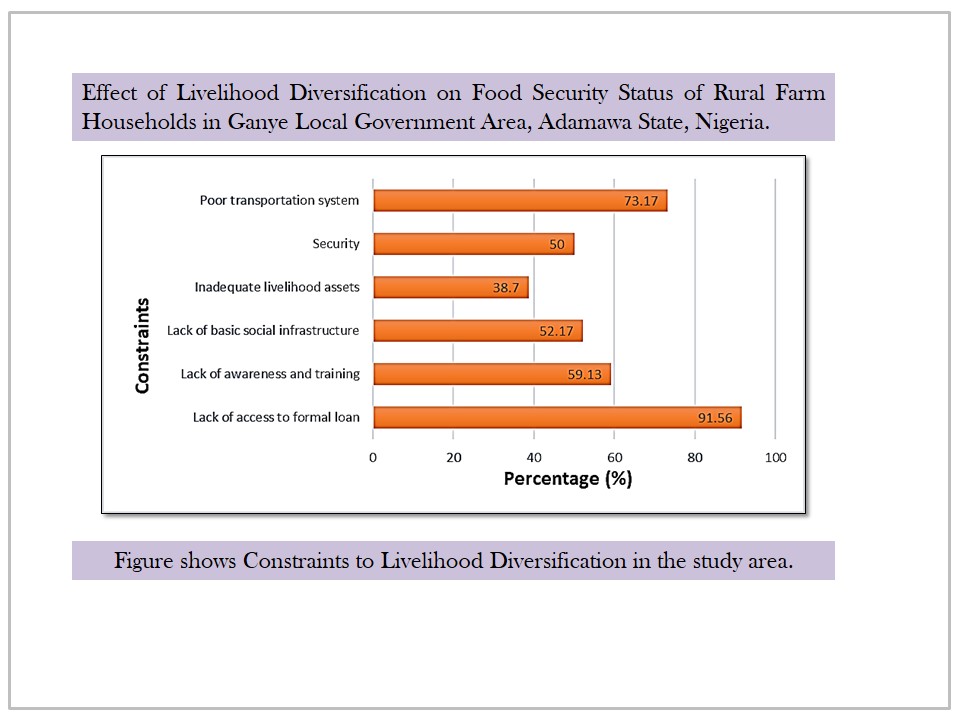Title
Effect of Livelihood Diversification on Food Security Status of Rural Farm Households in Ganye Local Government Area, Adamawa State, Nigeria
Authors
Yahaya Zira Dia,*a Muhammad Auwal Ahmedb and Jaafaru Joshuab
aDepartment of Agricultural Extension and Management, Adamawa State College of Agriculture, P.M.B. 2088, Ganye, Nigeria.
bDepartment of Agricultural Economics and Extension, Modibbo Adama University Yola, P.M.B. 2076 Yola, Adamawa State, Nigeria.
*Corresponding author E-mail address: yahayadia6@gmail.com (Yahaya Zira Dia)
Article History
Publication details: Received: 06th July 2022; Revised: 06th September 2022; Accepted: 06th September 2022; Published: 24th September 2022
Cite this article
Dia Y. Z.; Ahmed M. A.; Joshua J. Effect of Livelihood Diversification on Food Security Status of Rural Farm Households in Ganye Local Government Area, Adamawa State, Nigeria. Green Rep., 2022, 3(9), 12-22.

Abstract
This paper examined livelihood diversification as a survival strategy and a means to escape food insecurity among rural farm households in Ganye, Adamawa state, Nigeria. Although still of central importance, farming on its own is increasingly unable to provide a sufficient means of survival in rural areas thus necessitating the need for diversification. A multistage sampling technique was used to collect primary data from 230 rural household heads using structured questionnaire. Data collected were analysed using descriptive and inferential statistics. The result revealed that 80.43% of the respondents were male and 69.57% were married. Majority (76.08%) were educated and are mostly (73.91%) had farming as their primary occupation. Similarly, they undertake other diverse livelihood income activities which are mostly unskilled non-agricultural activities of which 52.17% moderately diversify, 37.83% had low diversification and only 10% were highly diversify. Food security condition was not much improved as about 56.96% of the households were unable to meet their daily food. The logit regression result showed that diversification was influenced by age, sex, educational level, primary occupation, household size, farm size, membership of cooperative, access to credit and total annual income and is significant at various levels. Rural farmers should be encouraged to participate in varied income generating activities in both agriculture and non-agricultural ventures to enhance their income and break the vicious cycle of poverty and impoverishment. The provision of soft loans at reduced interest prices will catalyse involvement in non-farm income generating activities thereby creating a boost in household income and consequently, welfare.
Keywords
Livelihood; Diversification; Food security; Rural farm household; Ganye